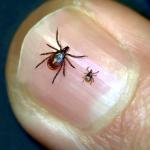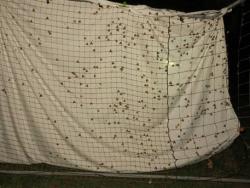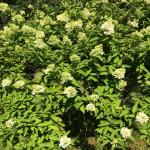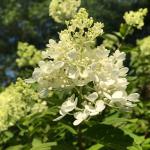A monthly e-newsletter from UMass Extension for landscapers, arborists, and other Green Industry professionals.
To read individual sections of the message, click on the section headings below to expand the content:
Hot Topics
2018 Green School Registration is Open - Early-bird rate ends 9/24!
UMass Extension's Green School is a comprehensive certificate short course for Green Industry professionals taught by UMass Extension specialists and University of Massachusetts faculty.
Location: Doubletree Hotel, Milford, MA
Dates: October 29 - December 13, 2018, twice weekly from 9:00 am to 3:30 pm
http://ag.umass.edu/landscape/education/umass-extensions-green-school
Designed for landscapers, lawn care specialists, nursery operators, sports field managers, public and private grounds managers, arborists and others in the green industry, our comprehensive course is for horticultural professionals who want to gain an understanding of economically feasible and environmentally responsible plant and land care practices and the relation of those practices to protecting the environment. Both experienced professionals as well as those entering the green industries will benefit from this course. Instruction is done via classroom style lecture and interactive activities, and is supplemented through online resources via an online learning management system.
THREE SPECIALTY TRACKS TO CHOOSE FROM
- Landscape Management
- Turf Management
- Arboriculture
For more details or a registration form, go to www.umasgreeninfo.org or call (413) 545-0895.
Ticks Are Active!
 Remember to take precautions when working outdoors and to conduct daily tick checks. For info on how to protect yourself, go to http://www.tickencounter.org/prevention
Remember to take precautions when working outdoors and to conduct daily tick checks. For info on how to protect yourself, go to http://www.tickencounter.org/prevention
The UMass Amherst Laboratory of Medical Zoology tests ticks for Lyme Disease and other tick-borne pathogens. Visit the Tick Report website for more information.
Do you know which tick is which? Go to http://www.tickencounter.org/tick_identification/tick_species
Questions & Answers
Q. I planted ‘Jacob Cline’, a powdery mildew-resistant cultivar of bee balm, in my garden a few years ago. Last year it was beautiful, but this year it has powdery mildew! What happened?
A. The term “resistant” can be misleading when it comes to plants and diseases. Many cultivars of popular garden plant species are advertised as being resistant to a certain disease when they would be better described as partially resistant or “tolerant.” These cultivars are indeed less susceptible to that disease than some other cultivars, but they are not completely immune. It is therefore better to think of disease resistance as a spectrum, not as an absolute.
Numerous factors affect disease resistance in plants. The list includes the genetics of both the plant and the pathogen, the weather, plant architecture, disease pressure (the amount of the pathogen present in the environment), and overall plant health. This last factor is influenced by aspects such as adequate water and nutrition, suitability of the planting site, appropriate soil pH, and the presence of insect pests or other diseases. If plants are not getting the basics they need for optimal health, they are more likely to get sick. They’re a lot like people in this way. So be sure all your plants, disease resistant and susceptible alike, are eating right, getting enough water (bee balm is not at its best in very dry conditions), situated in a place where the conditions are right for them to thrive, and not afflicted by insects or other problems.
In addition to ensuring that plants are well fed and watered, gardeners can also affect plant architecture to some degree. Most foliar pathogens require high humidity or a period of leaf wetness in order to infect a plant. Pruning, thinning, and proper plant spacing can increase air flow and light exposure, which helps decrease humidity around plants and speeds up the drying of foliage after rain. Keep the garden well weeded - in addition to robbing your garden plants of water and nutrients, weeds can also increase the humidity around them.
Gardeners have some influence on disease pressure as well. Several pathogens are able to overwinter in infected plant tissues. Removing plant debris from the garden can significantly decrease the amount of the pathogen in the immediate vicinity. Another good reason to keep the garden well weeded is that many common weeds can also be affected by diseases and act as a reservoir for pathogens.
It’s still a good idea to use disease resistant cultivars as part of an integrated pest management strategy, but keep in mind that resistance alone may not be enough to prevent plants from becoming diseased. Sometimes it’s just a banner year for powdery mildew; however, there are some things you can do to increase the odds that your plants won’t be seriously affected.
Angela Madeiras, UMass Extension Plant Pathologist
Trouble Maker of the Month
Gypsy Moth in 2018: An Overview
Although gypsy moth (Lymantria dispar) caterpillars are no longer active in August, and feeding has completely ended for this season, it is worth recapping gypsy moth activity in 2018 and thinking a bit about what might be expected in 2019. Gypsy moth egg hatch was first seen in Amherst, MA this year on May 4, 2018 and just before that date in other areas of the state. For those that remember, summer-like temperatures were experienced at that time and we quickly accumulated the full 90-100 growing degree days (base 50°F) needed for gypsy moth egg hatch during that week, following what almost felt like a slow start to accumulating degree days for the season. Ballooning, or the dispersal of the young larvae via silken threads blown on the wind, occurred quickly thereafter and young caterpillars settled on host plants to feed.
As we know, gypsy moth caterpillars prefer to feed on various oak species, but also have a preference for aspen, birch, and alder. They will feed upon hawthorn, linden, willows, witch-hazel, and even hemlock and white pine when favored hosts run low on leaves; the host list for gypsy moth is extensive. Trees and shrubs may be partially to completely defoliated by gypsy moth caterpillars. Those working and living in areas where populations were noticeable suffered under the constant raining down of frass (excrement) produced by caterpillars feeding high above in the canopy. Shredded and tattered leaf fragments also often littered areas beneath where gypsy moth caterpillars were actively feeding.
The MA Department of Conservation and Recreation completes an annual aerial survey of the state which allows them to detect the number of acres of defoliation occurring in our forests. In 2016, this survey picked up over 352,000 acres of defoliation attributable to gypsy moth across Massachusetts. In 2017, the gypsy moth population reached what we hope is the maximum size of the insect’s population during this outbreak, leading to over 923,000 acres of defoliation across Massachusetts that year. For 2018, the MA Department of Conservation and Recreation has recently reported a preliminary estimate of the number of acres of defoliation in Massachusetts due to this insect at approximately just over 161,000 acres of defoliation occurring in 2018 due to gypsy moth. This number can change, as it may currently contain acreage of defoliation that gypsy moth caterpillars were not responsible for. Go to https://www.mass.gov/guides/gypsy-moth-in-massachusetts for updates regarding 2018 defoliation from gypsy moth.
As anticipated, the impact of this insect across Massachusetts was far less in 2018 than what was experienced in 2017, as a whole. That being said, in some localized areas, homeowners in these “hot spots” may have and did feel that gypsy moth caterpillar activity this year was worse than last year.
What continues to be perplexing at this time is that, at least in Amherst, MA, the activity of the gypsy moth caterpillar killing fungus, Entomophaga maimaiga, was significantly lower in the 2018 population as when compared to what was seen in 2017. This fungal pathogen is typically lethal to gypsy moth caterpillars in a density independent manner, meaning that gypsy moth caterpillars are effectively killed by the fungus despite their population size. As we know, moisture delivered through adequate rainfall is important in the life cycle of the fungus. However, rainfall levels in Amherst, MA were similar at a site monitored in 2018 to what they were in 2017, yet the caterpillars at that same location suffered far less from the fungus this year, as reported by Dr. Joseph Elkinton’s lab at UMass Amherst. The hope is that he and his lab will be able to look into this phenomenon further in 2019.
So what does this mean? At least in the Amherst area, Dr. Elkinton is currently concerned that there may be an increase in the gypsy moth population in 2019. He is also concerned that this could be true in other areas across Massachusetts. Unfortunately, in many areas of Massachusetts, gypsy moth caterpillars survived through pupation and healthy adult moths emerged. Males could be seen fluttering around the UMass Amherst campus this year, and were reported from many other locations. Male moths found their flightless female mates, and females have laid the egg masses which will overwinter and provide us with a new caterpillar population in 2019.
Preparing for 2019
Now is the time to scout properties for gypsy moth egg masses stuck to the trunks and branches of trees, or really any other flat surface. This can be done throughout the fall and winter, but it is useful to do this exercise before spring for planning purposes. Having an idea of the approximate number of egg masses on or near your property, especially if you were in an area where defoliation occurred this year, can help inform decisions about whether or not management will be necessary in 2019. This is particularly important on host plants that are now running the risk of being defoliated for a 3rd or even 4th year in a row, since tree mortality does and has occurred due to this most recent outbreak of gypsy moth in Massachusetts.
What can be done? Although there are many predators, parasitoids, and pathogens that impact gypsy moth populations, if a high-value tree or shrub in a landscape setting needs to be protected from these caterpillars, there are many products labelled for the management of this pest. This may be a particularly useful option for trees that have already been defoliated in 2018 and, due to the presence of numerous egg masses, run the risk of defoliation again next year. This is especially important if a house, garage, or pedestrians could be the target if the tree were to fail due to poor health.
Planning gypsy moth management early (late April through late May), so that it can be done after caterpillars have hatched and settled to feed on host plant leaves, but are still small in size, can allow for the use of lower risk chemical active ingredients, such as Bacillus thuringiensis Kurstaki (Btk). This active ingredient must be ingested by caterpillars less than roughly ¾ inch in length to be effective. Btk is specific to caterpillars in the Order Lepidoptera (moths and butterflies) and will not harm other non-target insects. For caterpillars over ¾ inch in length, an active ingredient such as spinosad is another low-risk option for managing this insect. Both Btk and spinosad are derived from naturally occurring, soil dwelling bacteria. Spinosad should not be applied to plants while they are in bloom, as it is toxic to pollinators until it has dried (in approximately 3 hours).
Additional active ingredients found in products labelled for use against gypsy moth include, but are not limited to, acephate, acetamiprid, azadirachtin, Bacillus thuringiensis Aizawai, carbaryl, chlorantraniliprole, diflubenzuron, emamectin benzoate, permethrin, and tebufenozide.
Each active ingredient may have different risks to applicator health and the environment. It is important to read, understand, and follow all label instructions for safe and proper use. This fact sheet may assist with determining a general overview of the different risks insecticide active ingredients can pose to pollinators and other non-target organisms: https://ag.umass.edu/landscape/fact-sheets/tree-shrub-insecticide-active-ingredients-risks-to-pollinators-other-non . It is important to note that this list does not include all information from SDS (Safety Data Sheets), only the environmental risks provided on product labels. Products and their labels change frequently, so if something on the above fact sheet does not match the product label, follow the product label.
Tawny Simisky ,UMass Extension Entomologist
Plant of the Month
Hydrangea paniculata, Panicle hydrangea
Panicle hydrangea is a vigorous multi-stemmed, upright, deciduous shrub native to China and Japan. It grows to 8 – 15 feet tall and has oval to ovate dark green leaves. The flowers are white, upright and sharply pointed, conical panicles 6 – 8 inches long that contain both fertile and sterile flowers. Panicle hydrangea flowers from mid-July into September when few other landscape plants are blooming. The flowers are very showy and scented. Leaves turn an attractive yellow color in the fall. It performs best with medium moisture in a fertile soil rich in organic matter. Plants prefer full sun but can tolerate part shade. This is one of the most winter hardy of the hydrangeas.
Panicle hydrangea works well as a hedge or grouped in a woodland garden setting. It is also effective as a lawn specimen. It can be severely pruned in late winter or spring as it blooms on the current season's growth.
There several cultivars / varieties available. These include:
'Burgundy Lace' and 'Pink Diamond' - These forms bear 8-10" long flower panicles composed of sterile florets colored pink. The color intensifies as the flowers age, though hot weather and sun may lessen this effect.
'Grandiflora' - The famous "PeeGee Hydrangea", this plant flowers with tight heads of sterile white florets that turn pink and brown with age. This plant is often grown as a small tree.
'Kyushu' - This selection is a vigorous, upright shrubby plant with upright panicles of white flowers. It begins bloom earlier in the season (July) and as a young plant.
'Limelight' - This is unique for its bright lime-green flowers which form a rounded panicle. It grows to 8' tall and flowers profusely.
'Praecox' - This plant begins blooming earlier in the season (July) with loose panicles composed of both showy sterile and inconspicuous fertile florets. The effect is different than other forms and the plant reaches 15' tall.
'Tardiva' - Increasingly common on the market, this plant flowers later (August) with large bloom panicles held on thick stems. It grows to 8' tall and is often shrubby in habit.
'Unique' - This early-blooming, shrubby selection has large rounded panicles of white sterile florets. The blooms age to pink and the plant reaches 10' tall. It is increasingly common in the trade.
Panicle hydrangea has no serious insect or disease problems but aphids and spider mites may be a concern occasionally. There is some susceptibility to bud blight, bacterial wilt, leaf spot, rust and mildew.
Geoffrey Njue, UMass Extension Sustainable Landscapes Specialist
Upcoming Events
Emerald Ash Borer Field Day
Join Tawny Simisky, UMass Extension Entomologist, Rick Harper, UMass Extension Associate Professor, Ken Gooch and Nicole Keleher, MA Department of Conservation and Recreation Forest Health Program, Phil Lewis, USDA Animal and Plant Health Inspection Service PPQ, and Mollie Freilicher, MA Department of Conservation and Recreation Urban and Community Forestry Program, for a field day devoted to the invasive emerald ash borer (EAB). The morning will begin with a classroom-style overview of ash tree and EAB identification and status, as well as insect monitoring and management options. The remainder of the program will include on-site visitation of the Arcadia Wildlife Sanctuary to view ash trees and EAB infestations. Trapping demonstrations and tips to carry out community tree inventories to detect and manage ash trees will also occur. This training is designed for arborists, tree wardens/urban foresters, municipal officials, landscapers, land managers, landowners and tree enthusiasts.
- When: Tuesday, September 11, 2018; 9:00am - 1:00pm
- Where: Arcadia Wildlife Sanctuary, Easthampton, MA
- Registration
Other Upcoming Events:t
- 9/11: Emerald Ash Borer Field Day
- 9/24: End of early-bird registration rate for Green School
- 10/29: First day of Green School
For more information and registration for any of these events, go to the UMass Extension Landscape, Nursery, and Urban Forestry Program Upcoming Events Page.
Additional Resources
For detailed reports on growing conditions and pest activity – Check out the Landscape Message
For commercial growers of greenhouse crops and flowers - Check out the New England Greenhouse Update website
For professional turf managers - Check out Turf Management Updates
For home gardeners and garden retailers - Check out home lawn and garden resources. UMass Extension also has a Twitter feed that provides timely, daily gardening tips, sunrise and sunset times to home gardeners, see https://twitter.com/UMassGardenClip
Diagnostic Services
A UMass Laboratory Diagnoses Landscape and Turf Problems - The UMass Extension Plant Diagnostic Lab is available to serve commercial landscape contractors, turf managers, arborists, nurseries and other green industry professionals. It provides woody plant and turf disease analysis, woody plant and turf insect identification, turfgrass identification, weed identification, and offers a report of pest management strategies that are research based, economically sound and environmentally appropriate for the situation. Accurate diagnosis for a turf or landscape problem can often eliminate or reduce the need for pesticide use. For sampling procedures, detailed submission instructions and a list of fees, see Plant Diagnostics Laboratory
Soil and Plant Nutrient Testing - The University of Massachusetts Soil and Plant Nutrient Testing Laboratory is located on the campus of The University of Massachusetts at Amherst. Testing services are available to all. The function of the Soil and Plant Nutrient Testing Laboratory is to provide test results and recommendations that lead to the wise and economical use of soils and soil amendments. For complete information, visit the UMass Soil and Plant Nutrient Testing Laboratory web site. Alternatively, call the lab at (413) 545-2311.


